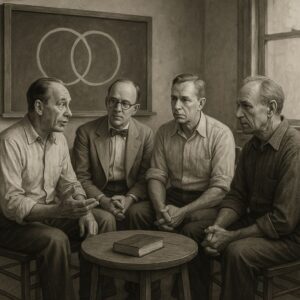On June 10, 1935, a quiet yet profound shift took place in the way society approached addiction and recovery. It was on this day that Alcoholics Anonymous, widely known as AA, was founded by Bill Wilson and Dr. Bob Smith in Akron, Ohio. This marked a pivotal moment in the history of addiction recovery—one that would ripple across the globe and change countless lives.
Before AA’s founding, alcoholism was often seen as a moral failing or a lack of willpower rather than a disease. People struggling with alcohol addiction faced stigma, isolation, and little effective support. Treatment options were limited and frequently punitive. AA introduced a revolutionary concept: that alcoholism was a chronic illness that could be managed through mutual support, honesty, and spiritual growth. Their “12-Step” program offered a structured pathway to recovery, emphasizing personal responsibility, community, and humility.
What made AA unique was its peer-led approach. Instead of relying solely on medical professionals, AA meetings created a safe space where individuals could share their struggles, encourage one another, and maintain sobriety together. This community-based model fostered a sense of belonging and hope, breaking the isolation that so many alcoholics felt.
Over the decades, AA’s influence expanded far beyond the U.S., inspiring countless other support groups addressing various addictions and compulsive behaviors. The core idea—that healing comes through connection and shared experience—resonated deeply and remains central to many recovery programs today.
The founding of Alcoholics Anonymous on June 10, 1935, stands as a testament to the power of compassion, peer support, and the belief in the possibility of change. Its legacy continues to offer hope to millions, showing that recovery is possible, and no one has to face addiction alone.

